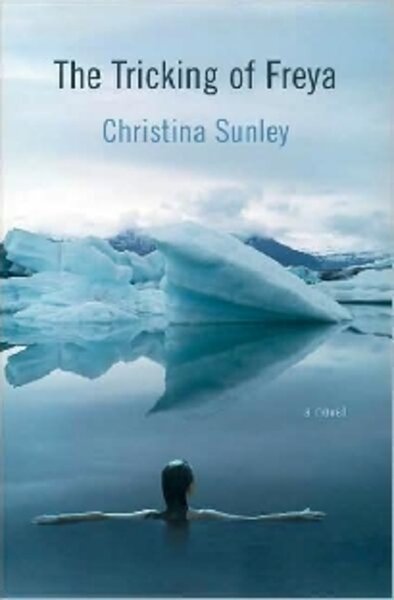The Tricking of Freya
Loading...
Summer vacation is a magic phrase for almost every kid. But Freya Morris only feels alive when school is out and she and her mother head for Canada, to a tiny lakeside town in Winnipeg called Gimli.
There, her grandmother, Sigga, makes her delicious treats such as ponnukokur, while her brilliant, unstable Aunt Birdie stuffs her with Icelandic poetry and myths. If all you know about Iceland is failed banks and Björk, The Tricking of Freya is a highly readable introduction.
“Norse myths, Icelandic sagas, skaldic verses: your mother lived and breathed the stuff, ate it for breakfast, imbibed it at night. Dunked me in it too,” she later writes her unknown and possibly lost cousin in “The Tricking of Freya.”
Those memorable summers continued until Freya was 13, when a tragic series of events ended with Birdie being admitted to an insane asylum. Six months later, she was dead.
As a result of the trauma, Freya refused to have anything to do with Iceland or her family for more than a decade. She didn’t return to Gimli until Sigga’s 100th birthday. At the party, she hears hints that in 1962, three years before Freya was born, Birdie may have had a child and given it up for adoption.
Despite the sketchiness of the clues and the doubts of Birdie’s oldest friends, who say they would have known about a pregnancy, the adult Freya is determined to find this last connection to her beloved aunt.
On her good days, Birdie could make Freya feel part of an immortal line of poets rather than a troublesome child. “I may have been named after the goddess Freya but mostly I got called Frey,” she writes. “Which made me sound less like a deity and more like a drunken brawl. Or some badly wrecked nerves. Or a thing that is always unraveling at the edges.”
Those tired of having Norse mythology co-opted for an endless array of Tolkien knockoffs should cheer Christina Sunley’s excellent debut novel. (Note: An exception must be made for Neil Gaiman, who, as far as I’m concerned, can keep co-opting any pantheon he wishes.)
Freya is the granddaughter of a celebrated Icelandic poet (as Sunley gives a reader to understand, Icelandic poets are celebrated rather more than American ones). Birdie, who spent her life writing a free-verse epic titled “Word Meadow,” teaches her niece Icelandic and explains the traditional poetic forms, such as kennings.
“A kenning is a different name for a thing,” she tells Freya. Word meadow, for example, means tongue. “Is it a meadow because words sprout on your tongue like flowers?” Freya asks. “On a good day,” Birdie says. “On a good day they do.”
A few examples of her grammar lessons were enough to make me grateful my relatives only tried to teach me Greek.
“Icelandic words are tricksters. Acrobats. Masters of disguise. Shapeshifters,” Freya explains. Later, she writes about her facility for memorizing her grandfather’s epics, “I liked to memorize things because that way you could make the words stand still.... Once an Icelandic word got stuck in a poem, its shapeshifting days were over.”
After her mother’s death, Freya dropped out of college, put everything in a storage locker, and moved to New York. She spends her days in a sub-basement in New York, “a mid-Manhattan Hades,” printing photos.
“Amnesia, estrangement: expensive practices requiring constant vigilance, relentless attention to the gritty present. Photography helps. Each click is now, now, now. And moving to New York was a good choice.... There is nothing to remind me of Gimli or Iceland or even small-town Connecticut. Because New York is like nowhere else, it’s mercilessly reminder-free.”
But the search for her cousin forces Freya first to Canada and then to Iceland, a wild land of glaciers and volcanoes that Sunley clearly adores. She does more than just describe it, though – some aspects, such as the 24-hour daylight in summer, become pivotal to the plot.
Sunley also delves into the tension between immigrant children and their homeland.
Freya’s grandfather left Iceland as part of an exodus in 1875, when a volcanic eruption poured ash all over the farmlands. While he is revered as a poet, the emigrants as a group are viewed by some Icelanders as traitors for having abandoned their native land.
Those in Canada are divided between families who assimilated as quickly as possible and those for whom the language and ways of “Our People” have only grown in importance. One of Freya’s Icelandic relatives is amused by the seven-layer vinarterta cake made in Gimli. At home, she remarks, we make do with four layers.
Birdie’s past is complicated to unravel. As Freya untangles it, she comes across answers that throw all the members of her family into a new light.
Sunley enjoys weaving retellings of Norse myths throughout the novel, and some of its central tenets are fused into the framework of “The Tricking of Freya.” For example, Ragnarok, the end of the world – and its subsequent rebirth – is a recurring theme.
As long as she can survive the galvanic upheaval of her family’s tragedies, Freya has at least a hope of building again.
Yvonne Zipp regularly reviews fiction for the Monitor.






